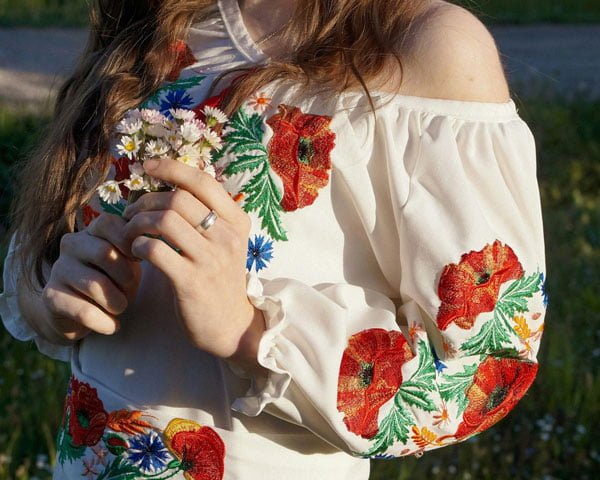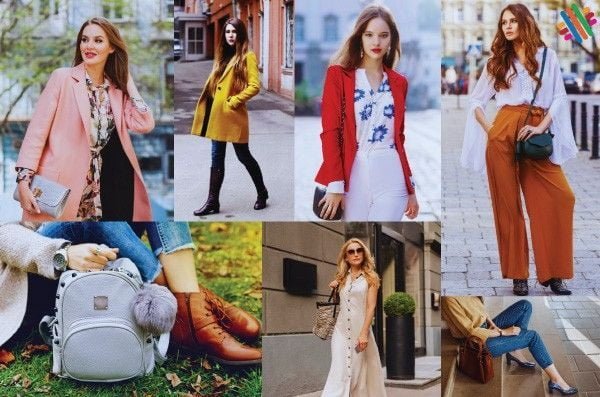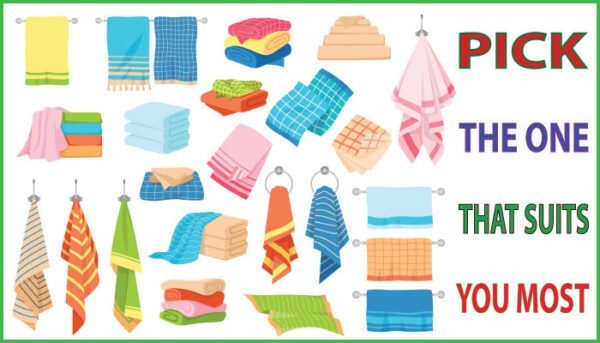Fabric Choices for Authentic Country Dresses
Last updated on July 2nd, 2025 at 08:30 pm
Country dresses are special to many of us as they represent simplicity, charm, and beauty. But have you ever wondered about the fabrics that make these dresses so beloved? Here, we’ll examine fabric selection’s role in making authentic country dresses and explore its rich tradition and cultural significance.

Definition of Country Dress
Country dress refers to a style of clothing inspired by rural life, defined by its practicality, comfort, and adherence to traditional patterns and materials. It is often made of natural fabrics like cotton, linen, and wool and decorated with local embroidery or prints. Generally, people in rural areas wear country dresses, but it can also be worn as a fashion trend in cities.
The Tradition of Country Dresses
Country dresses, with their timeless appeal and rustic charm, have been a staple in rural communities for generations. They have humble beginnings, originating from a need for practical yet stylish attire that could withstand the demands of daily life in the countryside. From tending to crop, attending community gatherings, country dresses were designed to be versatile enough for any occasion.
In their earliest forms, country dresses were simple garments made from readily available cotton, linen, and wool. They were chosen for their durability, comfort, and ease of care, making them well-suited for the rigors of rural life.
As time passed, country dresses evolved from purely functional attire into symbols of personal style and cultural identity. Different regions developed unique variations of country dresses, each reflecting the local community’s traditions, values, and aesthetic preferences. From the flowing skirts of the American prairie to the tailored bodices of European peasant dresses, country dresses became a canvas for self-expression, embodying the spirit of rural life in every stitch.
Different types of Country Dresses
There are so many country dresses around the world. The most common types are as follows:
Iconic European Folk Costumes
Europe’s diversity is mirrored in its folk costumes, with each region offering something uniquely its own. From the embroidered blouses of Ukraine to the flamenco dresses of Spain, these costumes are a celebration of cultural richness.
The Vibrant Textiles of Africa
Africa’s country dress is a riot of color, pattern, and meaning. Each African country boasts its own distinctive textiles, such as Nigeria’s Ankara and Ghana’s Kente, which are not only beautiful but also carry deep cultural significance.
Traditional Asian Attire and its Symbolism
Asia’s vastness is reflected in the variety of its traditional attire. From the elegance of the Indian Saree to the simplicity of the Vietnamese Ao Dai, each garment tells a story of cultural values, social status, and regional differences.
Native American Dress
American dress reflects a deep connection to nature, spirituality, and community. These garments often incorporate natural elements and are rich in symbolism.
Middle Eastern and Arab Traditional Wear
Middle Eastern attire, known for its elegance and modesty, reflects the region’s cultural and religious values. The Abaya and Thobe are not just clothing but symbols of cultural pride.
Latin American Cultural Attire
Latin America’s cultural attire is as diverse as its landscapes, with each country showcasing its own unique blend of indigenous and European influences. From Mexico’s Huipil to Brazil’s Baiana dress, these garments are vibrant expressions of cultural identity.
Country Dress in the Modern World
In today’s global village, country dress often finds new life in contemporary fashion, blending tradition with modernity. This fusion not only preserves cultural heritage but also introduces it to a wider audience.
Fabric Traditions: Cultural Significance and Fabrication Techniques
In the world of country dresses, traditional fabrics reign supreme. With its softness and breathability, cotton has long been a favorite choice, perfect for warm summer days and casual gatherings. Linen adds a touch of sophistication to any ensemble with its crisp texture and natural elegance. Wool, known for its warmth and durability, is ideal for cooler climates and outdoor activities. And let’s remember blends, which combine the best qualities of different fibres to create practical and stylish fabrics.
Cultural Significance of Fabrics in Country Dresses
Fabric choices are deeply intertwined with cultural heritage and identity. Across different regions and communities, specific fabrics hold special significance:
- Regional preferences: One of the most striking aspects of country dress fabrics is the diversity of materials used in different regions. Depending on its availability and suitability, local agricultural practices and climate dictated which material should be used.
- Symbolism and tradition: Certain fabrics hold symbolic meaning within specific cultures. For example, in some communities, handwoven textiles are highly prized for their craftsmanship and connection to ancestral traditions. Similarly, certain colors or patterns may have cultural significance, representing themes such as fertility, prosperity, or protection.
- Historical influences: The fabric choices found in country dresses are also shaped by historical circumstances, including periods of colonization, trade, and migration. For instance, introducing new textile technologies or foreign fabrics through trade routes may have influenced local fabric traditions.
- Societal norms: Fabric choices in country dresses can also reflect broader societal norms and values. For example, in some cultures, modesty and decency may dictate the use of certain fabrics or styles. In contrast, in others, individual expression and creativity may be encouraged through the use of bold colors and patterns.
Fabrication Techniques in Country Dresses
The beauty of country dresses lies in the fabrics and the intricate techniques used to create them. Fabrication techniques such as weaving, knitting, and dyeing play a crucial role in shaping the textures, patterns, and colors that define these beloved garments:
- Weaving: It is perhaps the oldest and most widely used method for creating fabric. Weaving involves interlacing threads, known as warp and weft, to form a stable cloth. In the context of country dresses, weaving offers a variety of textures and patterns, from the tight weave of a sturdy cotton twill to the loose drape of lightweight linen.
- Knitting: It is another popular technique for fabricating country dress fabrics, particularly for garments that require stretch and flexibility. Unlike weaving, which creates a stable fabric, knitting involves forming loops of yarn and interlocking them to create a stretchy, elastic material. Knitted fabrics are prized for comfort and versatility, making them ideal for casual country dresses and everyday wear.
- Dyeing: Natural dyes derived from flowers, minerals, and insects have been used centuries to create a rainbow of hues, ranging from earthy browns and greens to vivid reds and blues. In traditional dyeing processes, fabrics are carefully immersed in dye baths containing these natural extracts, allowing the fibres to absorb the pigments and achieve that unique color saturation you can see in country dresses.
- Embellishment: In addition to weaving, knitting, and dyeing, country dress fabrics may undergo various embellishment techniques to add texture, dimension, and decorative elements. Embroidery, for example, is very popular in many country designs, involving stitching intricate patterns onto fabric with colored threads, beads, or sequins.
Sustainability and Innovation in Country Dress Fabrication
In recent years, the fast fashion industry has undergone a transformative shift due to the increasing importance of sustainability. This movement recognizes the necessity of promoting ethical and environmental practices throughout the supply chain, changing the process of country dress fabrication:
- Eco-friendly materials: Eco-friendly materials are a key component of sustainable fabric production. Country dress manufacturers increasingly turn to organic fibres like organic cotton, hemp, and bamboo grown without synthetic pesticides or fertilizers. Additionally, recycled fibres from post-consumer waste, such as plastic bottles or textile scraps, offer a sustainable alternative to virgin materials, closing the loop on the fashion industry’s waste stream.
- Low-impact dyeing and finishing: Another area of focus in sustainable fabric production for country dresses is adopting low-impact dyeing and finishing processes. Traditional dyeing methods rely on harsh chemicals and large quantities of water, contributing to pollution and water scarcity. However, modern innovations like digital printing and air dyeing have led to the development of eco-friendly dyes and processes that minimize water usage, energy consumption, and chemical waste.
- Innovative design technologies: Alongside sustainability initiatives, innovation in design technology is also driving advancements in country dress fabrication. From computer-aided design software to automated manufacturing processes, technology is streamlining production, improving efficiency, and reducing costs. For example, 3D knitting machines can create seamless garments with minimal material waste, while digital textile printing allows for on-demand production and customization, reducing excess inventory.
In the end, country dresses are not just about looking good but reflect who we are and where we come from. A great deal of this impression is left on fabrics. Each fabric tells a story, weaving together tradition, culture, and innovation threads. So, the next time you slip on a country dress, take a moment to appreciate the fabric that makes it special—you’ll be wearing a piece of history stitched with love and woven with care.



